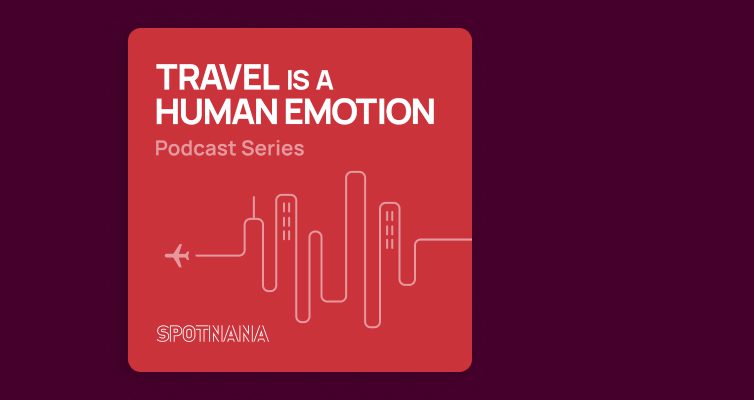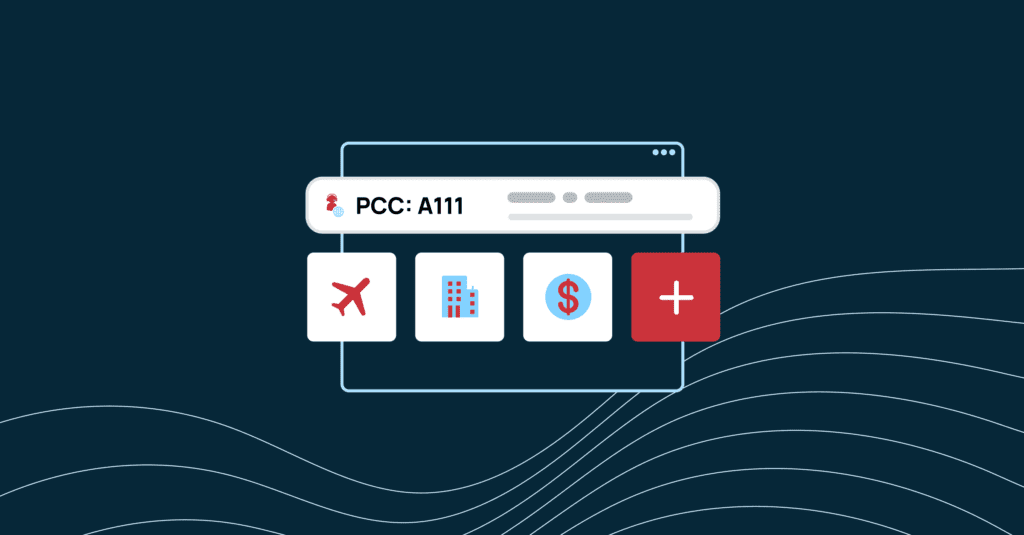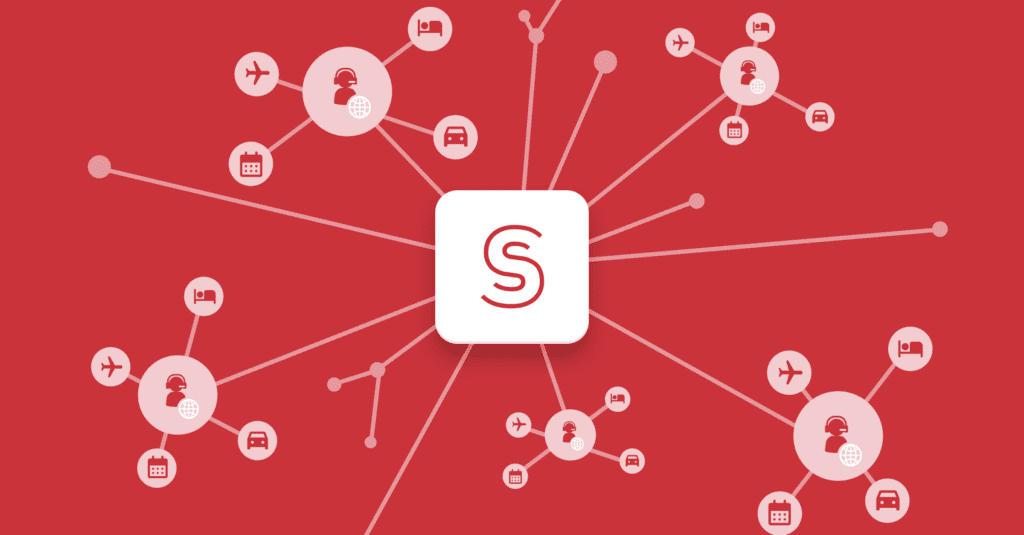How microservices are transforming corporate travel
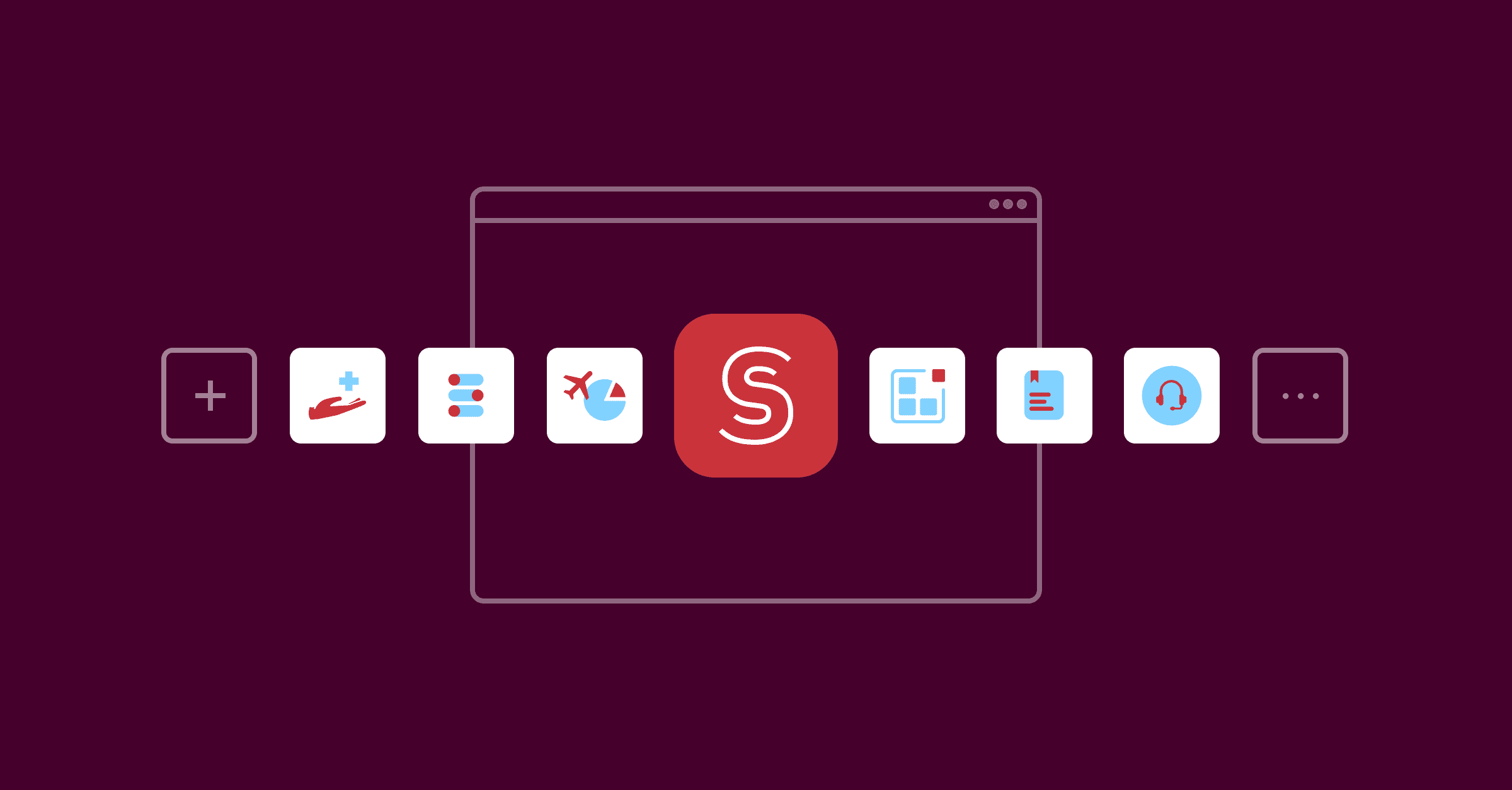
When looking for a new travel platform, it’s important to evaluate how new technology can solve your pain points and encourage more travelers to follow your policy.
Travel platforms built on a microservices-based architecture use flexible and scalable technology to provide better experiences to users and bring your travel program into the modern era.
Here’s how travel platforms with microservices-based architectures give better experiences to travelers, bring enhanced flexibility to travel managers, and enable companies to benefit from faster innovation.
What are microservices?
A microservices-based architecture structures an app as a variety of distinct services that are loosely coupled, independently deployable, and organized around the functional capabilities of a product.
Instead of a site or app having a single monolithic codebase, each facet of an app is run by a separate microservice.
A corporate travel app, for example, can use separate microservices for user authentication, search, policies, payments, and profiles to form a seamless shopping experience for customers as they communicate with each other.
The movement away from monolithic legacy architectures towards a flexible and scalable microservice-based architecture has happened across the business world due to the business advantages of building software in a more modular fashion that runs in the cloud.
The rise of AWS, Azure Cloud, and Google Cloud has led to more companies developing platforms with microservices-based architecture. Your favorite apps and sites probably use microservices, and you don’t even know it.
Benefits of microservices
There are many benefits to building technology on a microservices-based architecture.
Faster development cycles
Since each microservice is discrete, it can be developed, deployed, and enhanced separately as needed. If a microservice grows too large in scope, it can be broken down into a number of smaller microservices to maintain developer efficiency and improve customer experience.
Continuous releases
Developers are able to deploy changes continuously, since each microservice solves a specific problem and is independent of other microservices. Continuous releases mean faster updates, higher stability, and better experiences for users.
Updated microservices that aren’t functioning as intended can be rolled back to previous versions quickly and without impact to users.
Scalable
Resource use by microservices can grow or shrink based on demand using cloud technology so customers aren’t interrupted during periods of high demand. Automated load balancing provides a seamless experience to users regardless of how many people are using a product.
Cloud vs. on prem technology
Cloud-based technology reduces costs and increases the innovation velocity of technology companies. This means more affordable services for customers and new features being delivered quickly.
Benefits of Spotnana’s microservices-based architecture
There are many benefits for users of Spotnana’s microservices-based platform:
Microservices vs. PNR comments
Traditional travel technology relies on airline Passenger Name Record (PNR) comments to store trip data for passengers. PNR comments are a remnant of the legacy travel technology world dominated by Global Distribution Systems (GDSs), where booking data is stored as unstructured text that is generated by scripting tools supported by manual quality control processes.
Microservices are how information is shared in the modern world through mini programs that live in containers, take inputs, and give outputs. They’re listening all the time, and if someone calls their name, they receive the message then share information with other microservices as needed in an orchestrated fashion to automate end-to-end workflows.
Consider a complex workflow like allowing a traveler to change a flight date on a self-service basis. In the legacy world, a large number of unique scripts have to be created in order to read through the PNR to find the right information and then write the correct updates based on a broad range of possible scenarios, such as whether the fare rules allow exchanges or the traveler has already flown part of their trip. Extensive testing is required for each script and human verification is needed to prevent errors. Each script has to be tested again if anything changes in the workflow, making innovation very slow.
In a microservices-based architecture, data is stored in a structured database that is easy for each microservice to locate, process, and update. Workflows are handled through a series of microservices that each perform a specific task – for example, one microservice checks the fare rules, another checks for trip status, a third processes the change, and a fourth triggers an email notification to the traveler. Each of these microservices can be developed, updated, and tested independently by different engineers and then re-used in different combinations and sequences to automate a wide range of complex workflows.
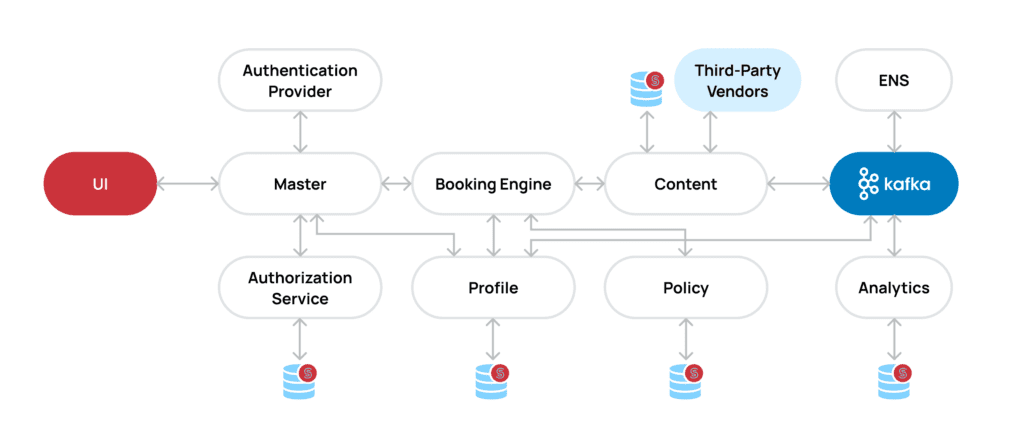
This diagram shows how Spotnana’s microservices-based architecture allows complex workflows to operate efficiently.
Why microservices have become essential for travel platforms
Microservices make a wide range of travel problems easier to solve.
Distribution of travel inventory, for example, has become increasingly fragmented over the past decade. It used to be possible for booking tools to pull all airline content from one or two GDSs in a standardized way. Now it’s necessary to also support NDC as a data standard, build direct NDC integrations to suppliers to take full advantage of the capabilities they offer, and integrate with aggregators that distribute content for low-cost carriers.
TMCs operating in the legacy world are struggling to keep up with this fragmentation, because it requires creating and managing a huge number of scripts to automate each variation of a possible workflow.
Spotnana uses microservices to manage this complexity in a much easier fashion. We’ve built a Content Engine (a collection of microservices) that takes in content from any source, breaks content down into data elements (fare price, fare rules, amenities, etc.) that are stored in our proprietary System of Record, and then delivers data to other microservices as needed. This approach makes it easy for us to simultaneously incorporate new content sources and consistently deliver higher levels of automation regardless of where content comes from.
In addition to accelerating innovation for travelers, our microservices also enable faster delivery of new capabilities to agents and travel managers. The same microservices we use to automate self-service flight date changes for travelers are also available to agents, because our Travel-as-a-Service platform includes both an Online Booking Tool and an Agent Desktop. This means that every innovation we build to save time for travelers is instantly available to agents as well.
Travel managers also benefit from highly configurable tools for managing users, policies, suppliers, custom data collection, and more. Each configuration is just another piece of data for our microservices to process in the context of an automated workflow, such as approving an out-of-policy booking or determining which preferred suppliers should appear at the top of a set of search results.
Open APIs for easy integration
Our microservices-based architecture is easy to integrate with other systems, because we make our microservices accessible via open APIs. It’s simple for us to connect to a company’s preferred systems for HR, expense management, analytics, rate shopping, carbon calculations, and more – all through real-time data connections.
Where needed, we can also extend our System of Record to store data elements from external systems that our microservices need to consume in order to automate workflows with third-party systems.
Given how powerful microservices are, it’s no wonder they’re used everywhere in modern, cloud-based software tools. They’re essential for driving automation and innovation in complex environments, and few environments are more complex than travel. It’s hard to imagine how travel platforms built on legacy architectures can be successful without rebuilding their entire code base as microservices.
Build trust with modern technology
Want to learn more about how Spotnana’s microservices-based architecture can transform your travel program? Get a demo today.

